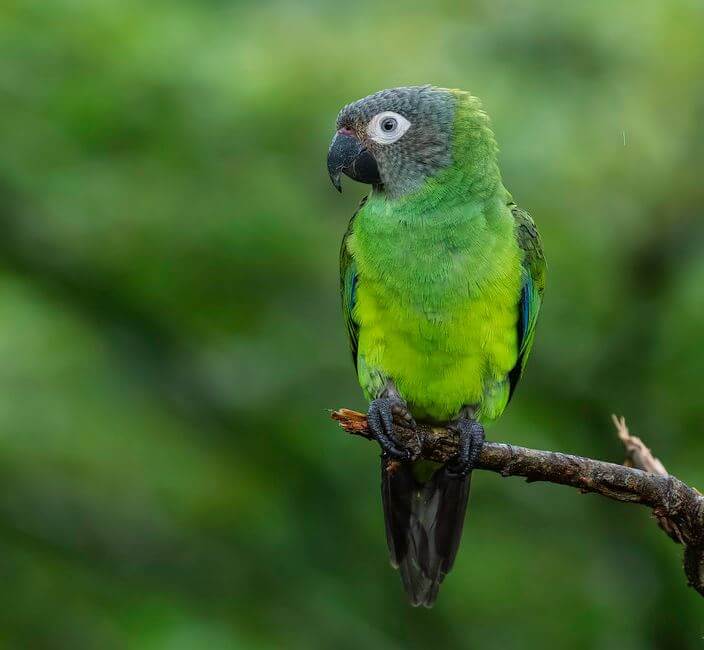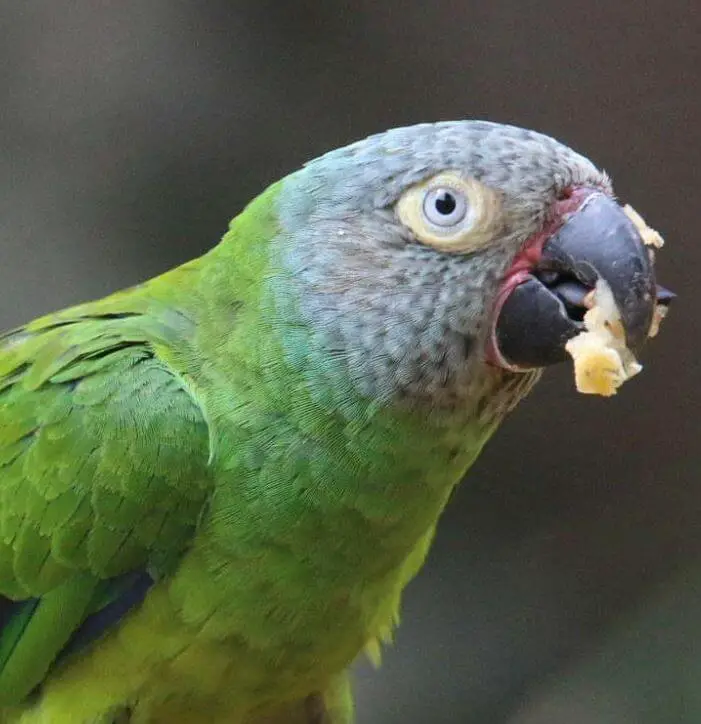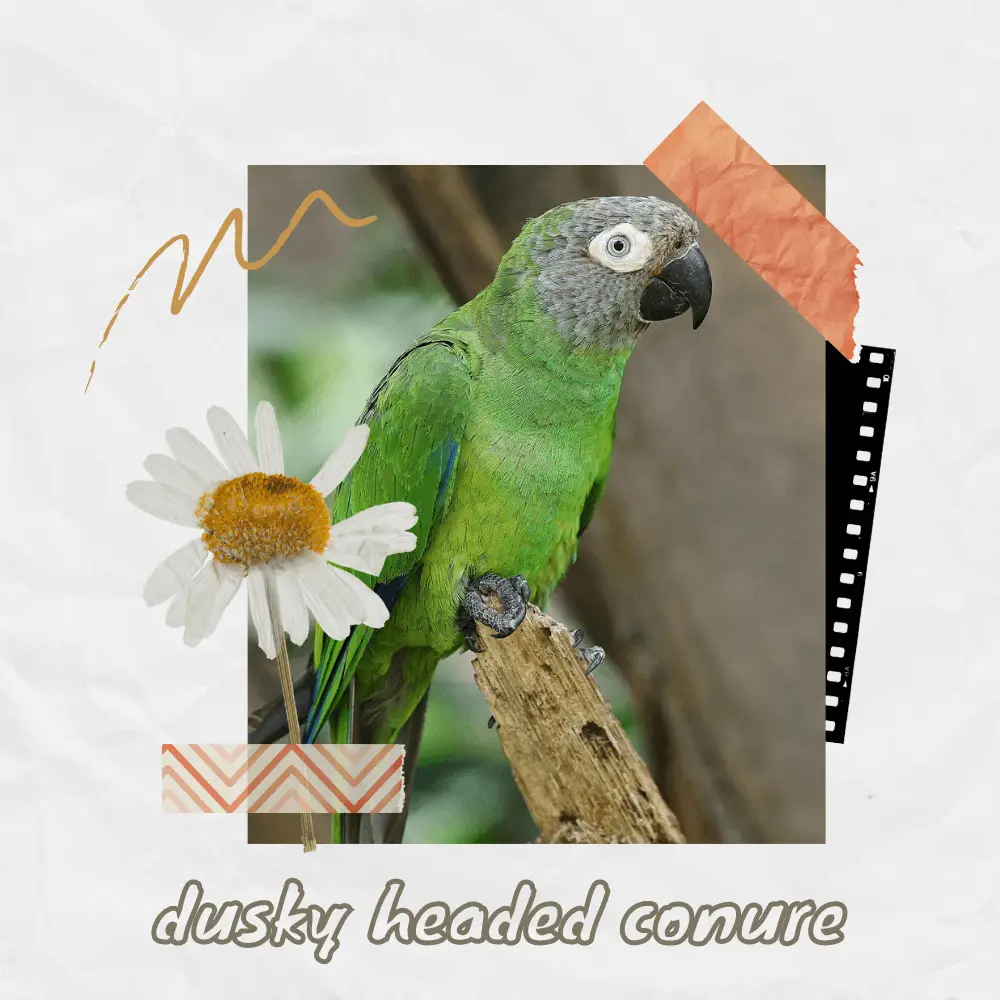The Dusky headed conure ( Aratinga weddellii ), also known as the Weddell parakeet, is a species of parrot in the Neotropical genus Macaws.
It is found along the tributaries of the Amazon in southeastern Colombia, eastern Ecuador, eastern Peru, and northeastern Brazil.
The species is considered endangered. The specific epithet in the scientific name honors the English botanist Hugh Algernon Weddell (1819-1877).
Dusky conure personality
The Dusky headed conure reaches a size of 28 cm, one wing lengthfrom 140 to 150 mm, and a weight from 95 to 115 g.
The plumage is predominantly green. The upper breast is olive green, the underbelly greenish yellow.
The head is grey-brown with each feather having dull blue fringing. The first primaries are black with a blue border, the others are green with a bluish border at the ends of the outer vanes.
The top of the tail is blue with a greenish base, the underside is black. The protruding, unfeathered eye-ring is white. The beak is black, the cere reddish gray.
The iris is light yellow. The legs and feet are grey. The immature birds (young birds before the first molt) have generally duller plumage. The head is grayer, the iris is brown in them and the white eye-ring is narrower.
Habitat

The Dusky headed conure inhabits rain forests along rivers, marshes, forest plots in wet savannas, secondary forests, and cleared areas with isolated woodland at altitudes of up to 750 m. It can occasionally be observed at forest edges or coffee plantations.
Way of life
The Dusky headed conure lives in pairs or in flocks of three to eight birds outside of the breeding season.
Occasionally it forms swarms of 75 to 100 individuals when there is enough food. Its migrations are preferably along the river banks, where its sleeping trees are also located. He rarely flies over the dense forest.
When eating, it is silent and unobtrusive. Its call, which is reminiscent of that of the pavua parakeet but sounds finer and sharper, can only be heard while it is flying.
Food

The Dusky headed conure diet consists of seeds, fruits, flowers and berries. He also examines rotten trees for insects and their larvae.
It often flies to places in the rainforest or on the river banks where the soil contains minerals.
Reproduction
In Bolivia and Colombia, the breeding season starts in July, otherwise between February and May.
Dusky headed conure does not have a special courtship behavior, one recognizes the breeding mood by the frequent stay in the breeding cave.
Dusky headed conure nest in dead trees, palms, or arboreal termite mounds at heights between 4 and 15 m.
It often lays its eggs, which measure 27.0 × 23.0 mm, in abandoned woodpecker dens. The young birds are raised by both adults. In captivity, a pair can raise up to three broods a year.
Behavior
its kept relatively rarely, it was probably introduced to Germany for the first time in 1976 and bred for the first time in Euskirchen in the same year.
Like many cave-nesting parrots, Dusky headed conure has a strong need to gnaw.
Cute Dusky Headed Conure playing on his back
SOURCE: Rachael Bowden
read also:

